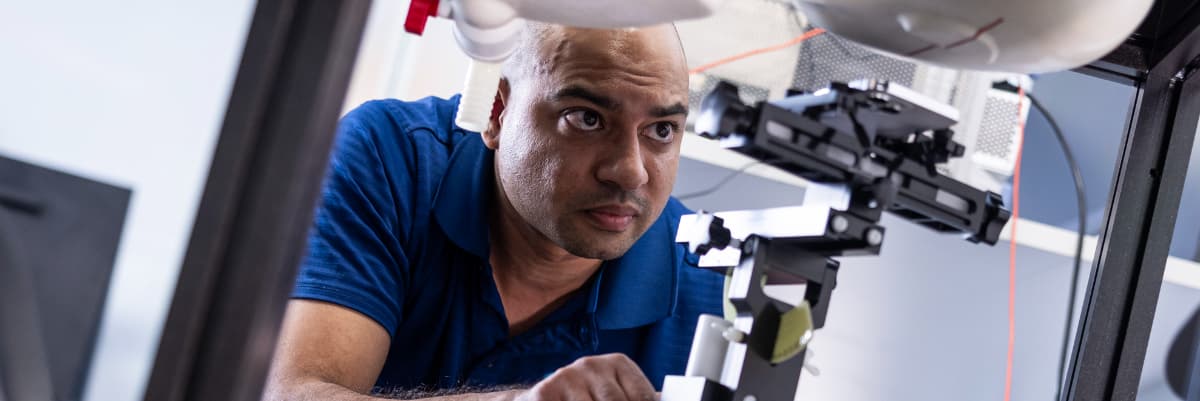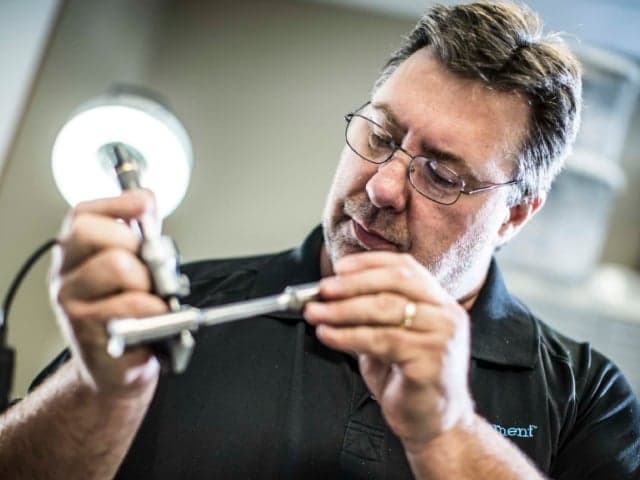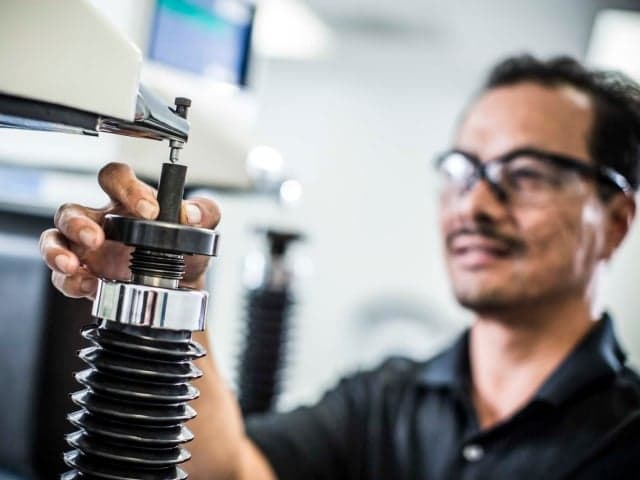Stress Rupture and Creep Testing
Ensure product reliability with stress rupture and creep testing up to 1200°C. Our experts analyze material performance under sustained loads, predicting failure points and optimizing designs. With in-house specimen preparation, rapid turnaround, and hands-on guidance, we streamline testing for aerospace, industrial, and research applications—helping you meet standards and prevent costly failures.

What is Stress Rupture and Creep Testing at Element?
Stress rupture and creep testing are specialized mechanical testing methods that evaluate material behavior under sustained loads and temperatures. At Element, we perform comprehensive testing on metals, composites, and plastics, analyzing their performance characteristics and predicting potential failure points under various conditions. Our testing provides manufacturers with critical data about their materials' long-term performance, including failure onset and microstructural changes caused by diffusion and dislocation movements.

What Can Element Offer You For Stress Rupture and Creep Testing?
Key tests offered
Key tests offered
We deliver both stress rupture and creep testing services with capabilities up to 1200°C (2192°F). Our testing program provides detailed insights into material behavior under sustained loads and temperatures.
- Tensile specimen evaluation with specialized extensometers
- Constant stress application testing
- Temperature-controlled environment testing
- Strain versus time analysis
- Complete creep stage analysis
Creep occurs in three stages:
- Primary creep (stage I) – Start of the test. The creep curve is rising, and the creep rate is high at the start of the test, slowly decreasing with time.
- Secondary creep (stage II) – This is the stable part of the curve, where the creep rate is low and stable.
- Tertiary creep (stage III) – This is the final creep stage, the creep rate is rising at the same rate as elongation, and there is a reduction of the sample area. This will soon result in a rupture of the specimen.
Materials we test
Materials we test
Our comprehensive testing capabilities cover a wide range of materials used in demanding applications. We specialize in evaluating materials where long-term performance under stress and temperature is critical to operational success and safety.
- Metals and alloys for high-temperature applications
- Advanced composites and fiber-reinforced materials
- Engineering plastics and polymers
- Industrial ceramics
- Natural materials including wood and stone
Methods and solutions offered
Methods and solutions offered
Our comprehensive testing approaches ensure thorough material evaluation using industry-standard methodologies and advanced analytical techniques.
- Tensile load applications
- Bending and flexural testing
- Biaxial stress evaluation
- Hydrostatic load testing
- Detailed strain measurement
- Temperature-controlled testing environments
- Comprehensive creep rate analysis
A specially designed tensile specimen and extensometer are used, with the test conducted in furnaces or environmental chambers. The results are recorded as a strain-versus-time graph to determine the creep rate.
Cutting-edge equipment we use
Cutting-edge equipment we use
Our laboratories are equipped with advanced testing systems designed for precise, reliable results across extended test periods.
- Specialized design extensometers
- High-temperature furnaces
- Environmental chambers
- Temperature control systems
- Data recording systems
- Specimen preparation equipment
Advanced analysis capabilities
Advanced analysis capabilities
We provide detailed analysis across all three stages of creep testing, delivering comprehensive insights into material behavior patterns and performance limits. Our expert team evaluates:
- Primary creep characteristics
- Secondary creep stability
- Tertiary creep progression
- Overall material performance
- Failure point prediction
Standards we test to and materials we test
American Society for Testing and Materials
- ASTM E139, ASTM E292, ASTM D1654, ASTM C1291, ASTM C1337, ASTM D7337, ASTM D2990, ASTM D3039, ASTM D7337, ASTM F519,
British Standards
- BS EN 2002-5, BS ISO 8013, BS 4A4-1, BS EN ISO 204, BS EN ISO 899-1
International Standards Organization
- ISO 903
Military Standards
- MIL-STD-1312
National Aerospace Standards
- NASM 1312
Metals and alloys
- High-temperature alloys
- Industrial metals
- Aerospace grade materials
Composites
- Advanced composites
- Fiber-reinforced materials
- Structural composites
Plastics
- Engineering plastics
- Thermoplastics
- High-performance polymers
Additional materials
- Industrial ceramics
- Wood
- Stone
Your Challenges, Our Solutions
Accurate product lifespan prediction
High-temperature certainty
Fully understanding material behavior
Standards compliance verification
Why Choose Element

Precision testing excellence
Global testing capabilities
Comprehensive analysis expertise
Advanced testing facilities
1,200°CMaximum testing capability
3stages
5industry standards
4applied loads

But don't just take our word for it
See what others want to say about partnering with Element

Explore our global network of labs and find your nearest location
VIEW ALL LOCATIONSRelated services

Metallurgical Testing Services
Expert metallurgical testing services to verify material integrity and prevent failures. Our accredited laboratories deliver precise analysis of metal microstructures, properties, and defects with expedited options. Ensure product reliability and compliance with industry standards.

Visual Inspection Services
Expert visual inspection services to detect defects, inconsistencies, and surface flaws in materials and structures. Enhance quality control and compliance with our Engaged Experts and industry-approved standards.

Fatigue Testing Services
Element's fatigue testing services analyze material durability under cyclic loads, providing insights into fatigue failure, fatigue life, and performance under real-world conditions.

Hardness Testing Services
Element offers comprehensive hardness testing services, including micro, macro, and hot hardness testing. With lab and on-site options, we help assess material durability for engineering, manufacturing, and compliance needs.

